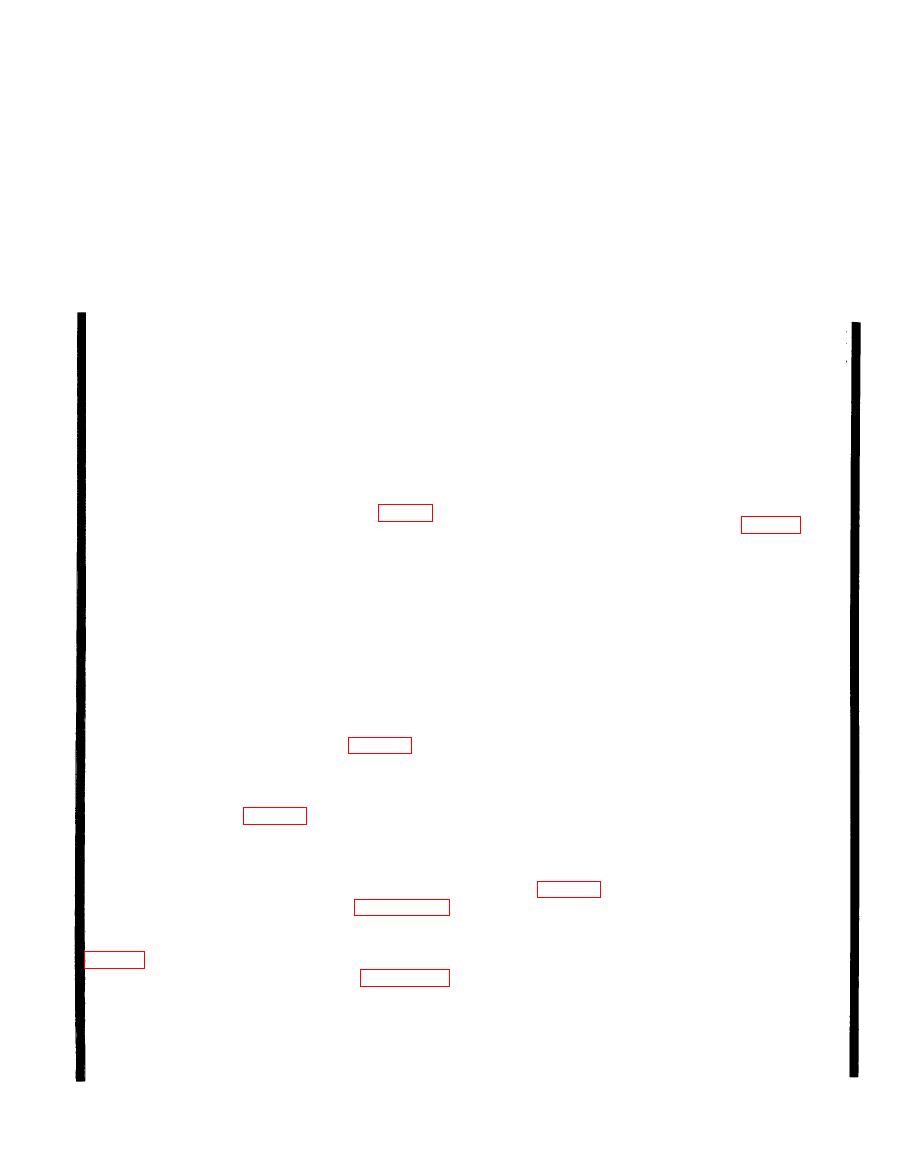 |
|||
|
|
|||
|
Page Title:
Section V. ADJUSTMENTS, REPAIRS, REPLACEMENT, AND TESTING |
|
||
| ||||||||||
|
|  TM 11-6660-204-25
ation, return the original tubes to their sockets before
case. Do not substitute tube type 5184A for tube
forwarding the defective item of equipment to a
12AU7 in the tube sockets for V301 and V303, and
higher maintenance level for repair.
do not substitute tube type 5751 for tube 12AX7 in
f. Interchangeability of Tubes. Unless specifically
the tube sockets for V302 and V310; such substitu-
tions could disable the set completely. The preferred
permitted by published instructions, different ver-
sions of the same tube type (ruggedized, nonrugge-
type tube 5R4GWA may be substituted for the ear-
dized, etc.) should not be substituted for the desig-
lier type tube 5R4GWY in the tube sockets for recti-
nated
type.
Signal
Data
Converter
f i e r s V401 and V408 in Power Supply
CV-146A/TMQ-5 uses several ruggedized tubes
PP-968-TMQ-5.
which should be replaced with the same type in each
Section V. ADJUSTMENTS, REPAIRS, REPLACEMENT, AND TESTING
by loosening the locknut and turning the setscrew on
the drive cable guide pulley until the spring is fully
a. If the chart does not feed out straight during
compressed. Back off one full turn of the adjusting
operation of the recorder the cause is probably mis-
screw and tighten the locknut.
alignment of the chart supply roll. The left edge of
the chart should be against the guide collar mounted
3-27. Adjustment of Split Gear Bias
on the intermediate guide rod, and the perforations
The split gear bias adjustment is performed to elimi
on the edge of the chart should coincide with the
nate gear backlash. The need for this adjustment is
extruded teeth around the left end of the chart roller.
usually indicated by gear chatter, excessive error in
If the two positions do not align, loosen the two
hysteresis, or linearity calibration test errors.
locknuts on the left side of the chart supply roll shaft,
a. Remove the nut below the pinion gear and pull
one on each side of the recorder casting (fig. 3-2).
the pinion gear from the motor shaft (fig. 2-19).
Shift the chart roll so that the chart will just rub
b. Expand the springs of the split gear by displac
against the guide collar and the perforations on the
ing the two halves of the gear by three teeth.
chart fit over the roller teeth. Tighten the locknuts.
c. While holding the split gears in place, replace
The fiction brake on the chart roll shaft should be
the pinion gear. Replace the nut on the motor shaft.
only tight enough to prevent the chart from dropping
below the bottom of the recorder. Excessive brake
NOTE
action may cause the chart to creep sidewise as it
If the nut securing the split gears is too
advances.
tight, the gears cannot move indepen-
b. If the chart on the recorder feeds out intermit-
dently, resulting in a split gear bias of
tently there is too much dragon the supply roll which
zero. A clearance of approximately
is caused by friction clutch slipping at times or there
1/32-inch should be provided between the
is a possibility of not enough clutch pressure. Check
nut and the gears.
with the manual chart advance knob (fig. 2-20) for
3-28. Recorder Pen Adjustment
ease of operation. If there are no signs of mechanical
binding, increase the clutch friction by tightening
a. Mechanical Pen Lift Adjustment. If the pen
the set nut and locknut located on the right side of
does not lift 1/16 inch from the chart as it moves
the chart roller shaft (fig. 2-19 or 3-2) until the
across the scale, check the position of the double-
proper chart advance rate is obtained. Another possi-
ended bolt connecting the solenoid plunger link to
ble source of trouble is a loose pinion gear on the
the pen-lifter bracket. To obtain the proper distance,
motor shaft, which may be easily tightened by the
throw the power switch to POWER OFF. Loosen the
setscrew in the gear hub.
locknut (fig. 2-21) and turn the double-ended bolt
until the pen is 1/ 16 inch from the chart. Tighten the
locknut. If the pen carriage shaft rotates sufficiently
graph 3-3 have not been followed, wear or binding
may occur between the ratchet wheel hubs and shaft
but the pen does not rise, tighten the two screws in
the pen clamp mounted on top of the pen carriage be
rect the trouble, then lubricate as directed in para-
sure to allow free movement of the carriage.
graph 3-3.
b. Pen Point Pressure Adjustment. If the pen does
not mark the chart, check the condition of the pen for
an adequate ink supply. If these are satisfactory, but
the pen still makes either no mark or a very light one,
The tension on the drive cable should be between 1
check the pressure of the penpoint against the paper.
and 1.25 pounds. This amount of tension is obtained
3-21
Change 3
|
|
Privacy Statement - Press Release - Copyright Information. - Contact Us |